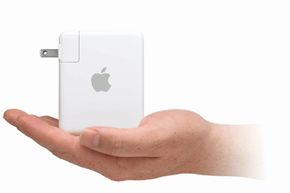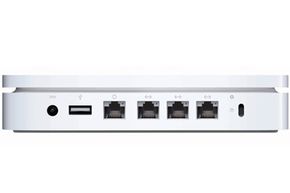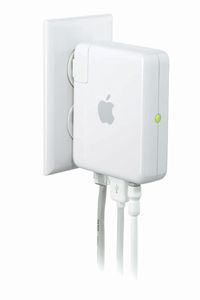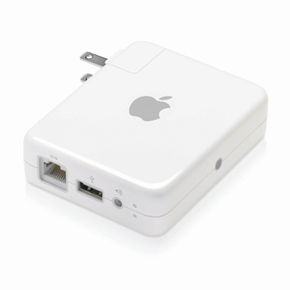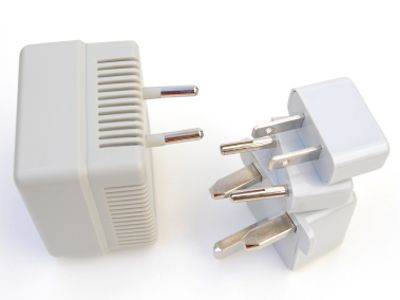There was a time when connecting to the Internet meant sitting at a desktop computer that was connected to a short (yet expensive) Ethernet cable. And this was a relative luxury compared to yesteryear, when you needed a modem connected to (gasp) a landline-based phone system. Nowadays, wireless Internet is practically ubiquitous, thanks in part to devices such as the Apple AirPort Express.
The AirPort Express is meant to let you create a wireless Internet access point anywhere -- at home, in a hotel room or just about any place you need a fast, dependable connection. It also lets you stream all sorts of multimedia goodies to various devices and extend the range of an existing wireless network. You can even use AirPort to add wireless connectivity to any device, such as a gaming console, that's equipped with an Ethernet port but not its own wireless card.
Advertisement
That's a lot of features for a device that's only 3.7 inches (9.4 centimeters) high by 2.9 inches (7.5 centimeters) wide and 1.1 inches (2.8 centimeters) thick. The small size, of course, is by design. Its small form factor means the Express slips neatly into the side pocket of even a svelte laptop carrying case.
It works with all popular flavors of Wi-Fi, including 802.11b, 802.11a, 802.11g and 802.11n. It's also compatible with both Mac and Windows operating systems. Security-wise, you can set the Express to use WPA (Wi-Fi Protected Access) or WPA2, 40-bit or 128-bit Wireless Security (WEP) and MAC address filtering.
Connect AirPort to your DSL (direct subscriber line) or cable modem, or your Ethernet network, and it provides wireless Internet access for up to 10 users. Plug it into a printer via the USB cable, and presto, any of those 10 users is able to print documents wirelessly. And if you're on a Mac, built-in Bonjour capabilities mean users on the network can easily find one another to share pictures, videos or any other kind of data.
Its iTunes capabilities are another key AirPort selling point. Plug its 3.5mm audio mini jack into any speakers around the house and then you can stream music -- in digital or analog -- wirelessly to those speakers from the iTunes library on your desktop or laptop computer. If you happen to have a handheld Apple device, such as an iPhone or iPod Touch, so much the better; you can remotely control iTunes and play music on demand without ever leaving your cushy couch.
In a hotel room and chained to the uncomfortable desk thanks to a 2-foot-long Ethernet cable? Hook up the AirPort and now your room has swanky, secure wireless, so you can soak in the tub and surf. Is that last room in your huge house suffering from a weak wireless signal? Plop an AirPort within range of your base station and it amplifies that signal and makes it much speedier.
Advertisement
